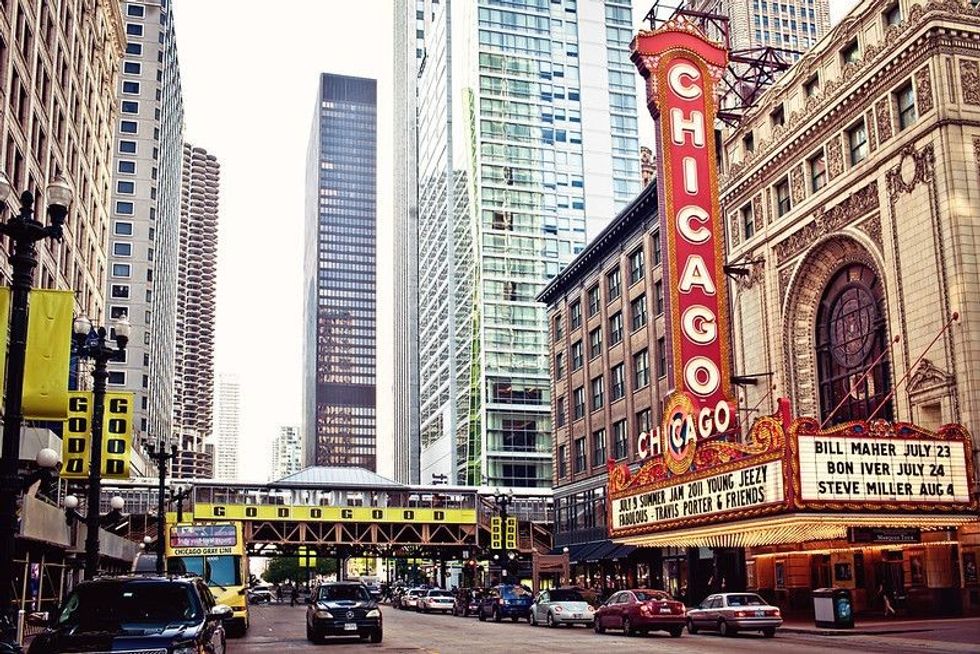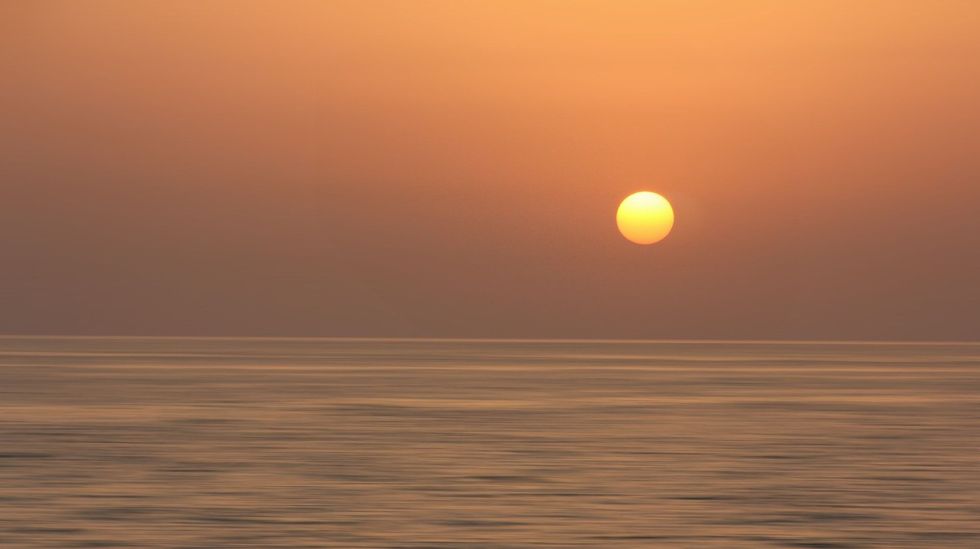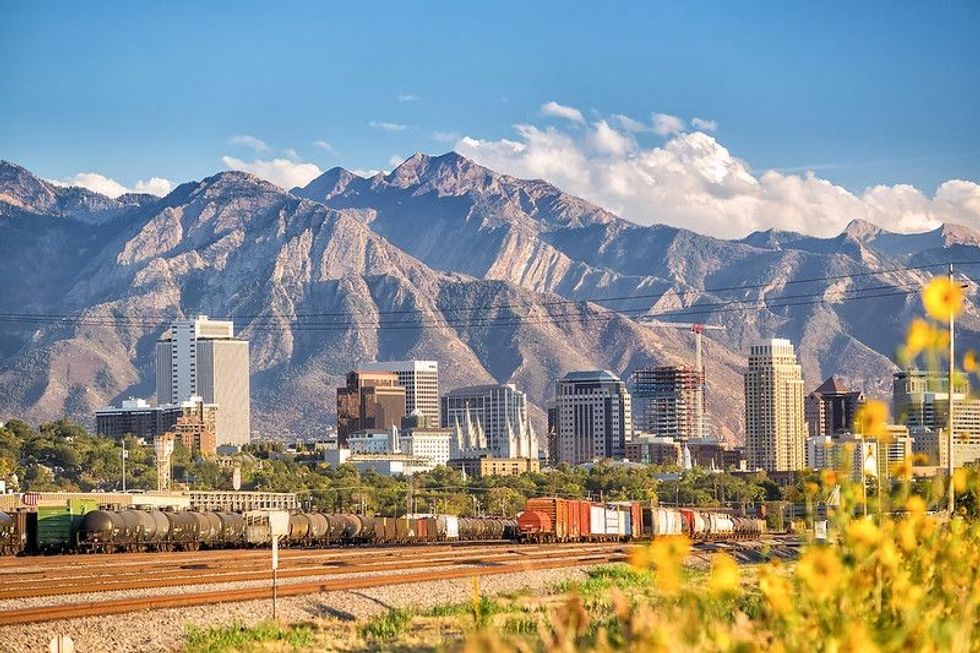El Salvador is the smallest and the most densely populated of all the Central American countries adorned with torrid green pristine beaches, palatial cities, gargantuan volcanoes, profligate culture, and a florid history.
El Salvador is the only country without a Caribbean coastline, it is still a fascinating country. Here are some mesmerizing facts about this mesmerizing land!
The country has a Republican government, therefore Republica de El Salvador; also known as the Republic of El Salvador. Also known as turquoise-browed motmot, Torogoz is their national bird and izote is the national flower.
El Salvador was the fourth largest coffee producer in the world. The finest coffee varieties of Pacas and Pacamara are cultivated here. San Salvador is the capital of El Salvador and is also the long-standing capital in Central America.
The Spanish conquistador Pedro de Alvarado (the country was named after him) was sent by Hernan Cortes. He invaded El Salvador in 1524 and was a Spanish colony for around 300 years, the lasting impact of Spanish influence can be seen even today.
El Salvador became a sovereign country in 1841. To the north and east is Honduras and to the southeast is the Gulf of Fonseca, separating Nicaragua from Salvador.
To the south is the Pacific Ocean and to the west and north-west is Guatemala. Weaving the country from the west and east are the mountain ranges of the Coastal Range and the Sierra Madre.
Located in eastern El Salvador is the city of San Miguel, which is the third-most populous city. San Salvador and Santa Ana are the other major cities. Salvador’s economy is greatly fed by agriculture until the industry started expanding around the decades of the '60s and '70s.
The national palace of El Salvador, located in San Salvador is a coruscating display of neo-classical, renaissance, and Gothic architectural styles, owned by the central government of El Salvador. Backpack your way through this alluring city and catch some lifetime moments of charm and joy!
After reading these interesting facts about El Salvador, also check facts about Armenia and facts about Belarus.
Interesting Facts About El Salvador Culture
A beautiful blend of Mesoamerica and medieval Iberian culture, Salvadoran culture is an amalgamation of Native American and Latin American culture. Here is all you need to know about the culture of Salvadorans.
The country is hegemonized by the Mestizo culture and Catholic Church. With a rich history that witnessed a criss-cross of innumerable traditions, Salvador manifests an entrancing brew of culture. The romance language of Castilian Spanish is their official language. Salvadoran culture has developed with interactions with the native communities living there, like Lencan, Cacaopera, Mayan, and Pipil communities.
With a population of over 60,000,00 Mestizos alone account for 86% of the population. Much of the believers preach Roman Catholicism, followed by Protestant Christianity.
The Amerindian and Spanish influences do not end here! The exotic cuisine of Salvadorans also evinces the cultural interplay. They have a great liking for meat dishes and seafood like clams, shrimps, and squids.
The delicious dishes of pupusa, refried beans, Pollo encebollado, and Yuca Frita mark the Salvadoran cookery. They are fond of coffee and soft drinks like coke. Beer is the most favored alcoholic beverage of the people here.
El Salvador carries an illustrious heritage donned with folk tales and legends. Their literature also bears a Spanish shadow. The early religious Salvadoran literature was deeply influenced by the Spanish colonial rule, while non-secular works emerged much later.
Their folk paintings, street art, and handicrafts are remarkable. They distinctly illustrate their opulent culture that traversed all these years to the present form. The pottery of Ilobasco, decorative textiles of San Sebastian, religious imagery of Concepcion de Ataco, red and black pottery of Guatajiagua are the indigenous crafts hailing from this beautiful land interweaving so many cultures!
Do you know that El Salvador is nicknamed ‘Valley of Hammocks’? They produce and export them in large numbers and are used in decorating the courtyards and living rooms.
The Amerindian and Spanish influences didn’t leave the musical heritage untouched. Be it folk music or contemporary music, Salvadoran music is a beautiful fusion of Mayan, Lenca, Spanish, Pipil, and Cacaioperan music. Salvadoran hip hop and Cumbia styles are popular amongst all.
What more? Even African traditional folk music finds space in the Salvadoran music heritage. This is called Marimba and the Salvadoran rock music found prominence around the period of the Civil War in the country.
Interesting Facts About Sports in El Salvador
Salvadorans love sports in their leisure time. Among a plethora of games, what they love the most is the Association Soccer.
The other sought-after games are basketball, baseball, swimming, and tennis. With a seating capacity of over 45,000, Estadio Cuscatlan in San Salvador, the capital city of El Salvador, is the largest stadium in Central America. There are countless soccer clubs across the country.
Out of these, ten best are chosen for the Primera Division. Despite having a wide range of sports to choose from, they cling to soccer! The reason why soccer is the most-watched spectator sport in this country.
Important Facts About Nature Of El Salvador
Before you ignore El Salvador for being the smallest, here are a few facts you must go through to prove yourself wrong! It could be small, but the natural wonders that El Salvador treasure is worth exploring.
It’s indeed an empyrean for the workaholics in search of holiday destinations, adventure seekers, and surfers out there! Read ahead to know the hidden gems in this paradise!
The breathtakingly beautiful Montecristo National Park lodged on the Guatemala-Honduras border abodes the El Triffinio mountains, which attracts adventure seekers and hikers. The 7,800 ft (2,377.44 m) high mountain gives a panoramic view of the beauty-laden valleys and Suburbans. This also shelters the species like puma, anteaters, agoutis, monkeys, alongside plumages, toucans, and quetzals.
The El Impossible National Park donned with shimmering waterfalls and verdant riversides is a wonder for adventurers and travelers alike! Its fecund rainforests spread over 9,400 acres (3804.04 ha) also feature the area.
Attracting tourists in the summers is Chorros De La Calera, marked for its roaring waterfalls, crystalline ponds, and swimming spots. The dense grandeur and the rich flora and fauna turn this place serene.
Situated near Santa Ana and Izalco’s natural volcanoes is Lake Coatespeque. This crystal-clear pearly-blue lake bordered with lush greenery is home to the beautiful but deadliest snakes in the world. With beach houses, people often flock in here to spend their weekends in this tranquil zion.
The largest lake in El Salvador, Lake Ilopango emerged out of volcanic eruptions of the extinct ranges. That left you aghast for sure! One of the most favored tourist spots, Lake Ilpango also has geothermal water sprouts along its edges.
Tumbling down the boulder cliffs are the Tamanique waterfalls, that has a series of four waterfalls enjoining them. These exuberant waterfalls are pleasing especially in the summers.
Without El Tunco, the list might be incomplete. The place is not just about surfing. What beguiles the photographers and vloggers is its unique rock formation that picturizes the horns of a bull.
Puerta Del Diablo is another rock cluster, beholding two large rocks called the ‘Devil’s Door’. The mysterious legends surrounding this tag are yet to unwind! The surreal landscapes beautifying the enthralling land of El Salvador can be viewed from here.
Facts About El Salvador Travellers
El Salvador is a country blessed with galactic and pictorial history. It holds the UNESCO-listed Maya ruins. The sites of Tazumal, Chihuatian, San Andres, and Joya de Ceren are picturesque landscapes that brag about the rich Mayan history of El Salvador.
The archaeological parks of Cihuatan, Joya de Ceran, San Andres, Casa Blanca, and Tazumal are a must-visit. Being a small country, traversing through these historical enigmas would be an easy task! The delightful pre-Columbian Maya ruins give a glimpse of the life of the Mayan people.
Suchitoto, near the San Salvador airport, is an old colonial cobblestone town. This quaint town is a cultural hub dotted with galleries, museums, restaurants, boutiques and has a lot more to offer. It still exhibits its long-standing classical tradition of indigo dyeing. The encircling areas of Lago Suchitlan are also worth-seeing, for their immensely rich marine and aviary life.
El Salvador is known not only for its captivating beauty but also for its rich culinary. The pupusas, the national dish of the nation, is a kind of flatbread prepared out of corn dough filled with meat, cheese, veggies and then flattened and grilled to delicious eatables are a never-miss at El Salvador.
The lofty and sublime hills of Salvador, are also home to the coffee plantations, where you cannot resist but have a sip of freshly processed coffee! If you have any coffee aficionados in the squad, you might have to leave them behind for the plantations are spell-bounding!
You can even visit the factories where these are freshly harvested and processed to quench your coffee cravings. These are situated along, La Ruta de las Flores.
When you visit a small country, the advantages are not few! Did you know that the ‘flower route’ aka La Ruta de las Flores, is a luminous pathway that ties up San Salvador, the glorious capital city with the coffee plantations?
This is obvious to make your trip easier and memorable. This 24.85 mi (40 km) long route enchants you with adorable sandy beaches of Sonsonate, the flamboyant weekend food market of Juayua, vibrantly colored facades of Ataco, and the paradisiacal coffee plantations of Apaneca.
The longest waves of the Pacific Ocean kiss the Salvadorian shores and turn its beaches into surfers’ paradise. The point breaks of Punta Roca and Punta Mango extending gracefully over 190.61 mi (307 km) of coastline are in El Salvador magnetizing the surfers out there in no time!
The tropical beaches of Playa El Tunco, Punta Roca, and Las Flores can be your favorite holiday destination!
Volcanoes In El Salvador
The volcanoes prove beneficial for El Salvador, by providing fertile, productive soil. Even the capital city of San Salvador is located near a volcanic range. You would be taken aback by the fact that there are some volcanic craters filled with lakes.
Also, the country’s largest river, Rio Lempa, originates from the volcanic mountains. However, the presence of volcanoes turns the region vulnerable to earthquakes.
El Salvador is nicknamed ‘The Land of Volcanoes’, for the country has over 20 volcanoes that are active. Domineering the land at a height of 7,811.68 ft (2,381 m) in Santa Ana, the highest volcano in the country. This could be the reason for a giant volcano represented in the Salvadorian flag.
The Volcanoes National Park is a harbor for tourists. With two to three volcanoes, the site opens up the natural phenomenon of volcanic eruption for tourists. Also, the peaks give a picturesque view of the landscape beneath. The national park houses the fourth-highest volcanic mountain of Central America.
Also nicknamed ‘Big Mouth’, El Bocqueron is another national park that lies on the city outskirts of San Salvador. This is because the volcano lies hidden inside a crater that was formed through the volcanic eruptions over time. An active volcano resides in the national park and it also features scenic wildlife and hazel woodlands.
The indigenous population of El Salvador is not of African descent, they are often referred to as Mestizos. This may seem like a Mexican state in Central America. The labor force of the Salvadoran Military is exceptional. The rainy season here helps the forest cover to replenish. El Salvador's economy has experienced modest economic growth in recent decades.
The Salvadoran economy has experienced relatively low rates of GDP due to the very functioning federal republic of El Salvador. These central valleys have abundant natural resources. It is the smallest country in America that has national parks, Roman Catholic churches, animals like sea turtles, turquoise-browed Motmot, which is the national bird.
Here at Kidadl, we have carefully created lots of interesting family-friendly facts for everyone to enjoy! If you liked our suggestions for El Salvador facts then why not take a look at facts about Botswana, or facts about Haiti.








